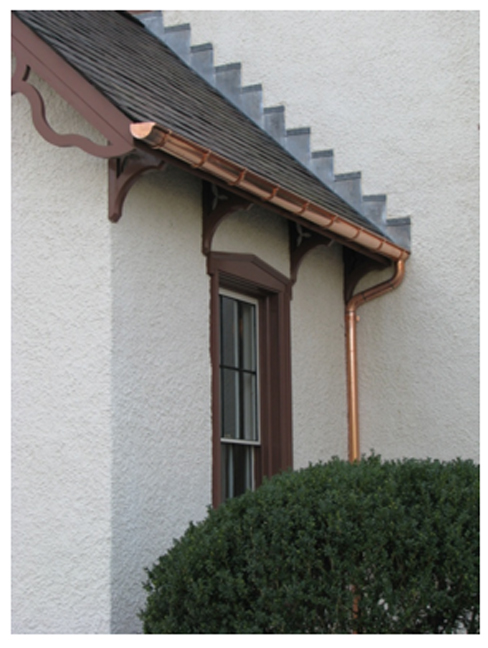By Jeffrey Larry
Every so often a new discovery allows us to better understand not only what the Cottage looked like during Lincoln’s time but how it changed and looked at other times during its long architectural history. Recently we discovered a circa 1860 painted photograph of Janet Riggs, the wife of original owner George Riggs, standing in front of the north elevation of the Cottage. A digital copy of this photograph, from the Maryland Historical Society, will arrive in a few weeks so stay tuned for a future blog entry about this exciting new addition to our collection.
 Another discovery, found during the interior restoration of 2007, was evidence of decorative painting, on the interior plaster walls of the vestibule that was made to look like walnut paneling.
Another discovery, found during the interior restoration of 2007, was evidence of decorative painting, on the interior plaster walls of the vestibule that was made to look like walnut paneling.
Though much research must still be done, a preliminary paint analysis determined that this trompe l’oeil paneling was probably exposed during Lincoln’s residency. As seen in this 2007 photograph, years of moisture infiltration has damaged the plaster. Steps began this week to help eliminate this problem. Wagner Roofing, who was responsible for installing the Cottage’s slate and metal roof in 2005, returned this week to install copper gutters and downspouts on the vestibule eaves. There is no historical evidence of a drainage system on this roof but it is an important and subtle addition that will help remove moisture caused by splash-back on the exterior walls. The new drainage system, though on a smaller scale, shares the same construction details as the existing gutters also installed by Wagner in 2005.
 The installation of a drainage system is the first step in the long process of research, discussion and discovery of the decorative painting on the interior walls of the Cottage vestibule. It is important to note that this first phase was generously funded by the Hampton Hotels’ Save-A-Landmark program that celebrated their 10th anniversary here this past summer. More than 50 Hampton employees made a real and lasting contribution by volunteering their labor to continue the preservation of this site.
The installation of a drainage system is the first step in the long process of research, discussion and discovery of the decorative painting on the interior walls of the Cottage vestibule. It is important to note that this first phase was generously funded by the Hampton Hotels’ Save-A-Landmark program that celebrated their 10th anniversary here this past summer. More than 50 Hampton employees made a real and lasting contribution by volunteering their labor to continue the preservation of this site.
